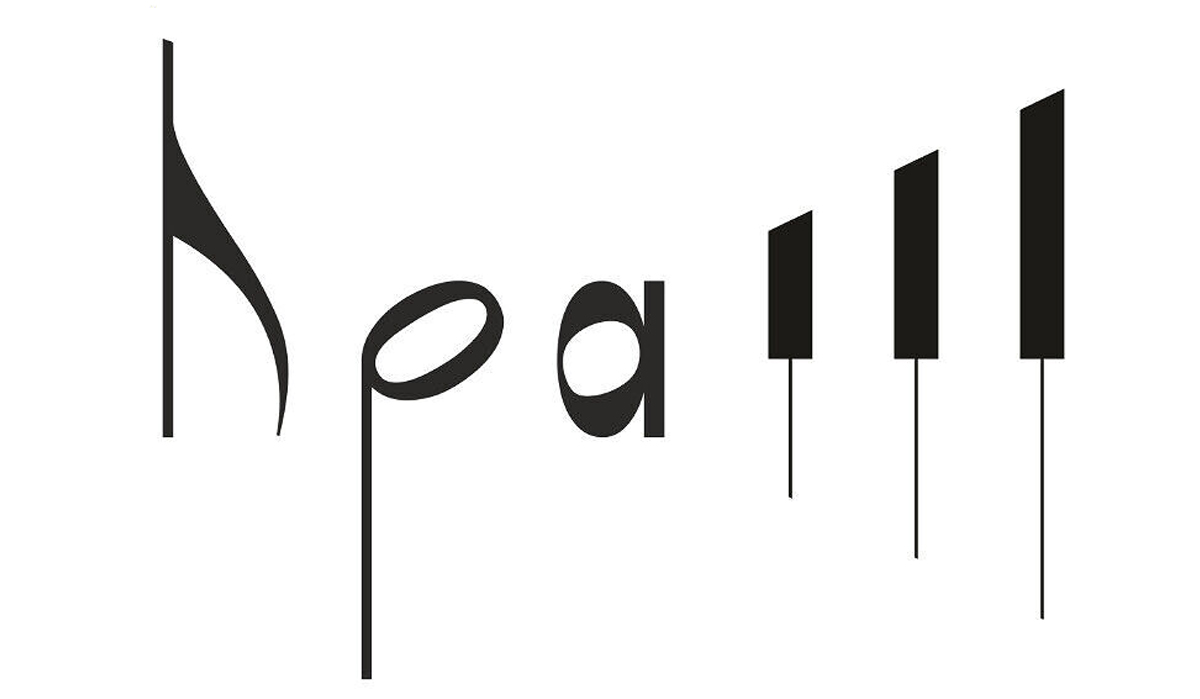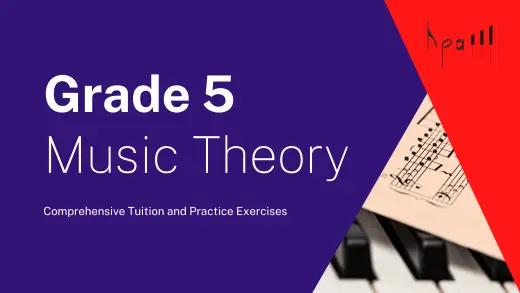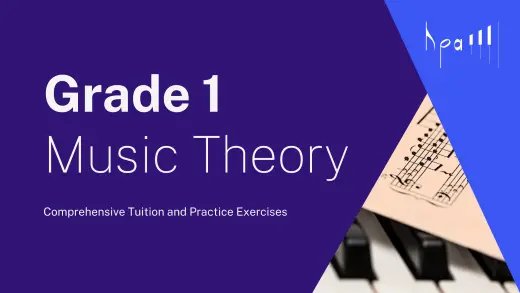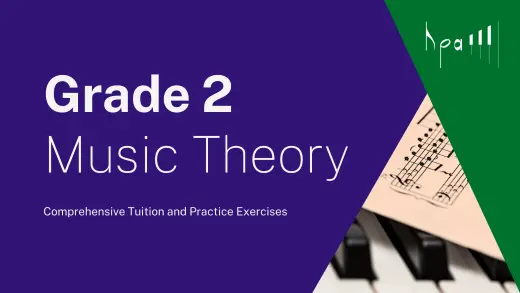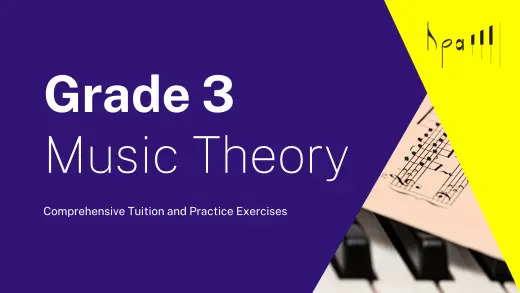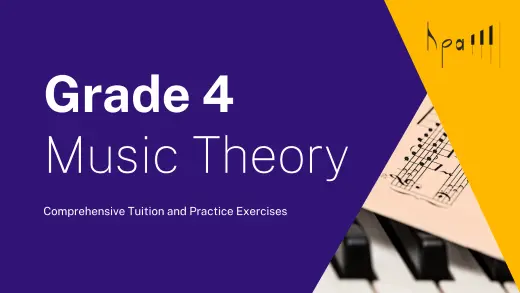GRADE 4 MUSIC THEORY ONLINE COURSE
Have fun outplaying your Grade 4 Music Theory Exam in under 4 hours.
The Grade 4 Music Theory Course focuses on developing music literacy without leaving anyone behind. The friendly lesson plans create an accesible learning journey to students.
We have beginners’ minds at heart, so no prior knowledge is needed to follow along.
Dive in and discover all the powerful insights about Grade 4 music theory we offer.
Conquer Grade 4 in less than 4 hours!
Grade 4 Music Theory
This self-paced online course has been designed for busy students who want to build a solid understanding of music theory.
The contents are based on the latest ABRSM and Trinity College syllabus and comprises 90+ tutorial videos, an auxiliary book and lots of self-graded quizzes.
Let our musical expertise guide you through the labyrinth of Grade 4 music theory and help you avoid the common blunders on the exam’s day.
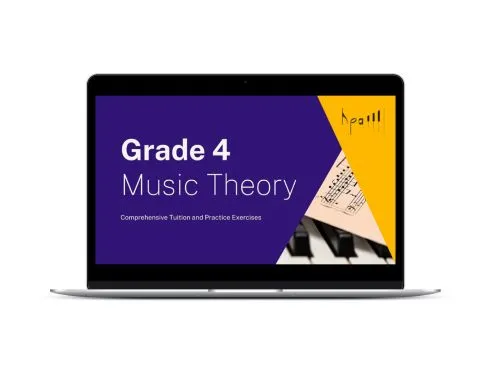

Accesible video lessons
Our courses stand out from others because our lessons are presented as animated tutorials. The teaching approach mirrors that of traditional tutors in a school setting, but we’ve transitioned from the conventional classroom to a contemporary virtual environment.
Following each module, students have the opportunity to apply the acquired knowledge through dynamic music theory quizzes.
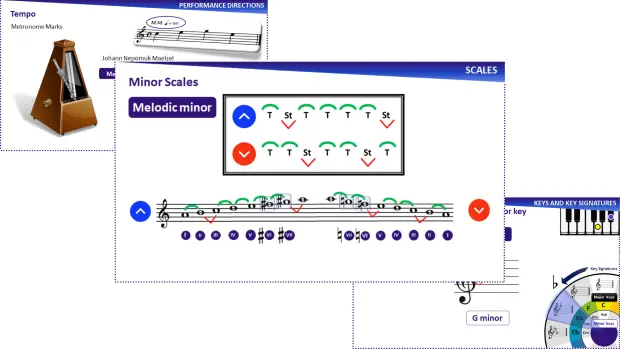
The Book for Grade 4 Music Theory
The grade 4 music theory book serves as an accompanying tuition book that supports students in their learning of music theory. Organized according to the videos, it makes it easy to follow along.
It can be downloaded as an eBook, or purchased in a printed paperback form, allowing students to annotate as they watch.
Benefit from working through the material at your own pace or use the book as a reference later on.
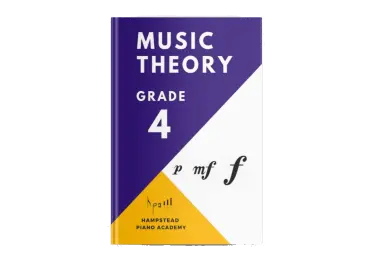

Assessments on the spot
All the fun in learning music theory comes after mastering the rules themselves.
After a module completion, the students’ knowledge is assessed with self-grading quizzes updated to latest model answers. Instant feedback is provided in the blink of an eye.
There is also an area for questions where students can communicate with the teacher and send them their questions.
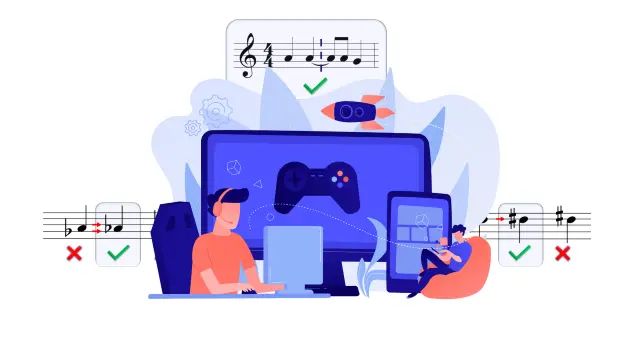
From zero to Grade 4 in less than 4 hours
Why this is the music theory course to enroll

Up-to-date Grade 4 Syllabus
Become more confident with the ABRSM Grade 4 syllabus, as well as with Trinity College contents and some extra tips you will be provided with. The course has been updated to comply with the last revision of the syllabuses, made in 2020.
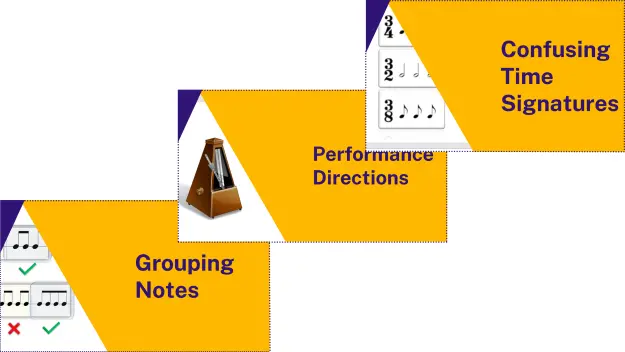

Online Music Theory is here!
In paper music theory exams are a thing of the past! As online learning is embraced around the globe, our mission is to equip students with all the neccesary knowledge to master the new online exam format.

Lifetime Access
Music theory is essential in the understanding of music as a whole. If you’re passionate about music, a lifetime access to our online resources will allow you to progress at your own pace, unlimited access to the materials and free updates.
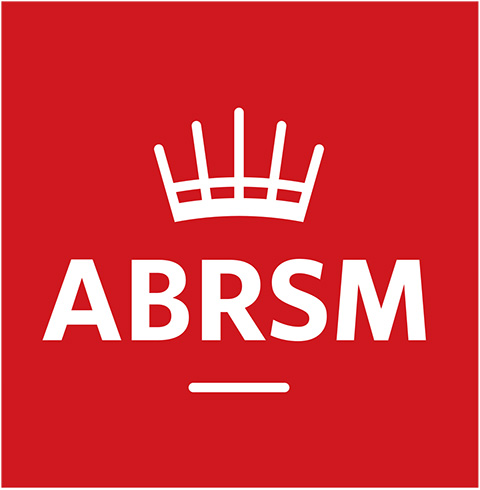


Benefits of this Grade 4 Course

Catch up and close in on Grade 5 theory

Concise and to the point lessons

Learn at your own pace

Sign in on multiple devices

Outstanding video quality

Master the new online format
Unlock your music theory knowlege and ace your exam
What’s Included?

Online Course
 94 lectures
94 lectures 4 hours on-demand video
4 hours on-demand video Self-grading Quizzes
Self-grading Quizzes Free Mock Test
Free Mock Test Ask questions
Ask questions
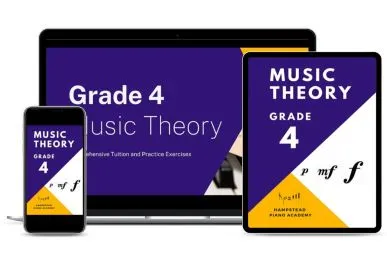
Bundle
Online Course + Textbook 94 lectures
94 lectures 4 hours on-demand video
4 hours on-demand video Self-grading Quizzes
Self-grading Quizzes Free Mock Test
Free Mock Test Free Sample Exam Paper
Free Sample Exam Paper Ask questions
Ask questions Downloadable Ebook
Downloadable Ebook

Textbook
 15 chapters
15 chapters 168 pages
168 pages Ebook
Ebook Self-grading quizzes
Self-grading quizzes Free mock test
Free mock test
Grade 4 Music Theory Contents
Based in London, ABRSM and Trinity College are two of the largest assessment boards on the planet. These organizations operate many music certificate evaluation centers across the globe.
Hampstead Piano Academy regularly revises its content to stay up-to-date on the latest music theory information.
Notation
♦ The Music Stave
♦ The Grand Stave
♦ Parts of a Note
♦ Writing Notes
Clefs
♦ The Treble Clef
♦ The Bass Clef
♦ The Alto Clef
♦ Writing changes of clefs
♦ Pitch
♦ Ledger Lines
Time Values
♦ Note Values
♦ Rest Values
♦ Music Note Tree
♦ Dotted Values
♦ Dotted rests values
♦ Triplets
♦ Duplets
♦ Bars and bar lines
♦ Ties and slurs
Time Signatures
♦ Simple Time
♦ Compound Time
♦ Changes of time signatures
♦ Confusing time signatures
♦ Rewriting music in a new time signature
♦ Irregular time signatures: 5/4, 5/8 and 7/8
Grouping
♦ Beaming foundation
♦ Time signatures with a crotchet beat
♦ Time signatures with a minim beat
♦ Time signatures with a quaver beat
♦ Grouping Rests – General rules
♦ Grouping in Compound Time
Accidentals
♦ Writing an accidental
♦ Cancelling an accidental
♦ Double sharps and Double flats
Key and Key Signatures
♦ Major and minor modes
♦ Grade 4 Key Signatures
♦ Writing Key Signatures
♦ The Circle of Fifths
♦ How to find the Major key of a Key Signature
♦ How to find the key signature of a minor key
♦ How to find the key of a piece
Scales
♦ Tones and Semitones
♦ Major Scales
♦ Degrees
♦ Minor scales
♦ Chromatic Scales
Chords
♦ Tonic Triad
♦ Chord inversions
♦ Subdominant triads
♦ Dominant triads
♦ Dominant Seventh Chords
♦ Chord progressions
♦ 4 Part Chords
♦ Cadences
♦ Arpeggios
Intervals
Ornaments
Performance Directions
♦ Dynamics
♦ Tempo
♦ Articulation
♦ Repeat Marks
♦ Expression Terms
♦ Other signs and terms
Get to know your Teachers
Our team at Hampstead Piano Academy, has crafted this online course. We’ve taken care of everything to ensure our students have what they need for success in their music theory studies.
We’re proud to share that both of us have earned degrees – a Master’s, Postgraduate Diploma, and Bachelor’s – from esteemed institutions like the Royal College of Music or Trinity Laban Conservatoire. And, of course, we owe our consistently high marks to the magic of music theory!
FAQ
How do I access the lessons?
Select “Enroll Course” to set up an account along with an order. Enter an email address and choose a new password. After completing the order, go to our website’s menu tab, select ”My Account”, and then input your credentials to log in.
Do I also need the Textbook?
Having a course blueprint at your disposal can enable you to follow the lessons along the videos more efficiently. Available as a digital PDF as well as a paperback book, The Grade 4 music theory book also grants access to all quizzes through QR codes.
Can I self study theory effectively?
The grade 4 textbook is a useful roadmap for those wanting to self study music theory. Watching our premium videos helps understand the most common mistakes in order to ace your music theory exam.
Interested in applying for the Grade 4 exam? This course allows students to comfortably adapt to the new online format as paper exams are now gone.
Should I skip the quizzes?
Going through all grade 4 quizzes is the best possible way to get yourself ready for the theory exam.
Will a teacher help me if needed?
Just input your questions in the bottom box of the learning mode and we’ll be glad to assist you.
The Academy offers live individual instruction to all ages. If you would like more information, contact the school for more details.
How do I know my level?
Take this Grade 3 mock exam quiz to see what you already know.
Don’t miss the offer

Theory level checker
Review your current music theory level with this quiz and find out which course fits you best.

Apply for an online exam
After completing the course, we encourage students to apply for a Grade 4 music theory online exam at the ABRSM or Trinity College London websites.
Advance to Grade 5
Hungry for knowledge? Unravel Grade 5 music theory to continue your instrument’s studies from grade 6.
